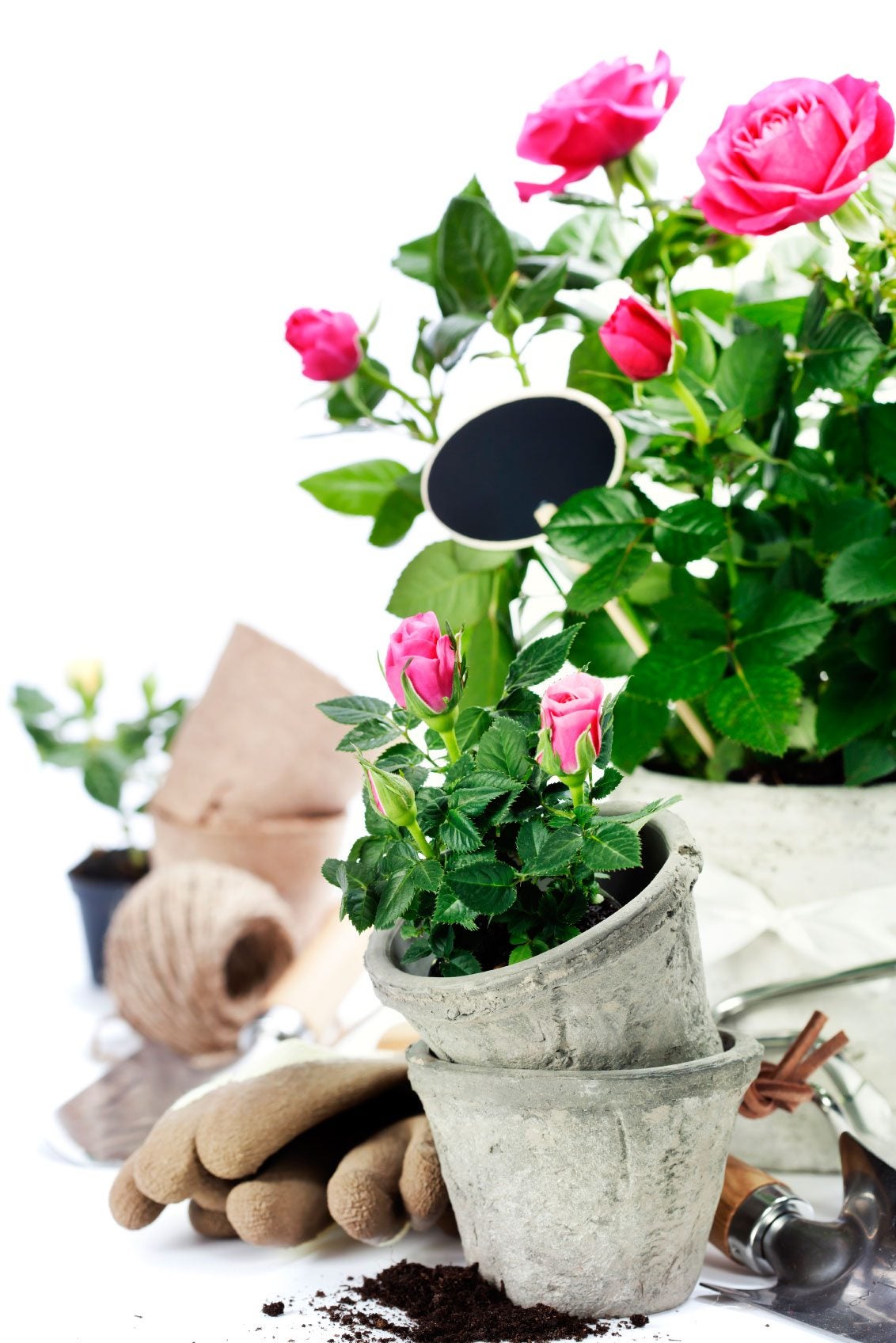How To Transplant A Rose Bush


Transplanting roses really is not much different than planting a budded and blooming rose bush from your local greenhouse or garden center, except that the rose bush to be moved is still in its dormant state for the most part. Listed below are the instructions for how to transplant roses.
Best Time to Transplant Rose Bush
I prefer to start transplanting rose bushes in early spring, around the middle to the end of April if the weather is nice enough to be able to dig the soil. Early May still works as a good time to transplant roses, if the weather is still rainy and cool. The point is to transplant rose bushes early on in spring before the rose bushes get fully out of their dormant state and start growing well.
How to Transplant a Rose Bush
First, you will need to select a good sunny spot for your rose bush or rose bushes, paying attention to the soil at the selected site. Dig the hole for your new rose 18 to 20 inches (45.5-51 cm.) in diameter and at least 20 inches (51 cm.) deep, sometimes 24 inches (61 cm.) if you are moving an older bush. Place the soil taken from the planting hole in a wheelbarrow where it can be amended with some compost as well as about 3 cups (720 mL.) of alfalfa meal (not the rabbit food pellets but actual alfalfa meal). I use a hand cultivator and scratch up the sides of the planting hole, as it can become very compacted while digging. Fill the hole about half full of water. While waiting for the water to soak away, the soil in the wheelbarrow can be worked with a garden fork to mix in the amendments at about a 40 to 60 percent ratio, with the original soil being the higher percentage. Before digging out the rose bush to be moved, prune it down to at least half its height for hybrid tea, floribunda, and grandiflora rose bushes. For shrub rose bushes, prune them just enough to make them more manageable. The same manageable pruning holds true for climbing rose bushes, just keep in mind that excessive pruning of some climbers that bloom on the last season's growth or “old wood” will sacrifice some blooms until the following season. I start my digging 6 to 8 inches (15-20.5 cm.) out from the base of the rose bush, going all the way around the rose bush forming a circle where I have pushed the shovel blade as far down as it will go at each point, rocking the shovel back and forth a bit. I continue this until I have gained a good 20-inch (51 cm.) depth, each time rocking the shovel back and forth a bit more so as to loosen the root system. You will cut some roots but will also have a nice-sized root ball to transplant. Once I have the rose out of the ground, I brush off any old leaves that may be around the base and also check for other roots that do not belong to the rose, gently removing those. Many times, I find some tree roots and they are easy to tell that they are not part of the rose bush's root system due to their size. If I am moving the rose bush to another place a few blocks or several miles away, I will wrap the root ball with an old bath or beach towel that is well-moistened with water. The wrapped root ball is then placed in a big trash bag and the entire bush is loaded into my truck or car trunk. The moistened towel will keep the exposed roots from drying out during the trip. If the rose is just going to the other side of the yard, I load it either in another wheelbarrow or onto a wagon and take it directly to the new planting hole. The water I filled the hole halfway with is usually all gone by now; if for some reason it is not, I may have some drainage problems to address once I get the rose bush planted. I place the rose bush into the hole to see how it fits (for the long moves, don't forget to remove the wet towel and bag!). Usually, the planting hole is a bit deeper than it needs to be, as either I dug it a bit deeper or did not get a full 20 inches (51 cm.) of root ball. I take the rose bush back out of the hole and add some amended soil to the planting hole to make a nice base for its support and for the root system to sink down into. In the bottom of the hole, I mix in about ¼ cup (60 mL.) of either super phosphate or bone meal, depending on what I have on hand. I place the rose bush back into the planting hole and fill it in around it with the amended soil. At about half full, I give the rose some water to help settle it in, then continue filling the hole with the amended soil-- ending by forming a little bit of a mound up onto the base of the bush and a little bowl shape around the rose to catch rainwater and other watering that I do. Finish by watering lightly to settle the soil in and help form up the bowl around the rose. Add some mulch and you're done.
Gardening tips, videos, info and more delivered right to your inbox!
Sign up for the Gardening Know How newsletter today and receive a free copy of our e-book "How to Grow Delicious Tomatoes".

Stan V. Griep contributed to Gardening Know How for many years, and has been a Colorado Native Rosarian for over four decades. He is an American Rose Society Certified Consulting Master Rosarian in the Rocky Mountain District, and a member of the Denver Rose Society, the Loveland Rose Society, and the American Rose Society. He is Gardening Know How's in-house expert on all things roses.
-
 Looking For Plants To Give You The Soft And Fuzzies? Try These 5 Fuzzy Leaf Plant Options
Looking For Plants To Give You The Soft And Fuzzies? Try These 5 Fuzzy Leaf Plant OptionsLovers of texture, drama, silver foliage and tactile plants will adore these special sensory garden additions. These fuzzy leaf plant options will leave you all aglow
By Susan Albert
-
 Get Ready For A Summer Of Hummers! Grow These Full Sun Hummingbird Plants and Flowers
Get Ready For A Summer Of Hummers! Grow These Full Sun Hummingbird Plants and FlowersIf you’re lucky enough to enjoy a sunny backyard, make sure you are maxing out on your pollinator opportunities and grow these full sun hummingbird plants and flowers
By Tonya Barnett